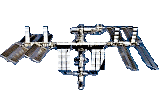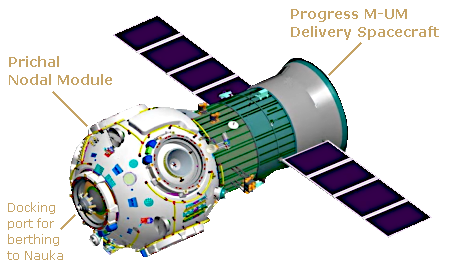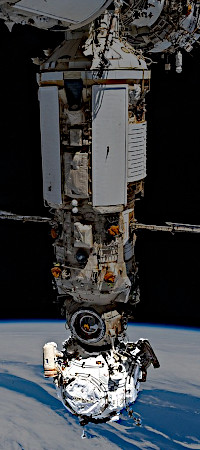
Prichal connects to the nadir (bottom) port of Nauka.(MLM)


Prichal connects to the nadir (bottom) port of Nauka.(MLM)

The Prichal Nodal Module is a Russian component of the ISS. It was launched on 24 November 2021 attached to a Progress M-UM spacecraft by a Soyuz 2.1b launcher. The un-piloted progress craft was used to fly Prichal to the ISS and berth it to Nauka's nadir docking port.
Prichal is a nodal module that has a pressurized spherical ball-shaped design with six hybrid docking ports. One port is active to allow permanent docking to the Nauka module of the ISS. The remaining five ports are passive, enabling spacecraft to dock with the module.
The modules considerably larger diameter offers much more room than the Zvezda Service Module.


Length: 4.9 m,
Diameter: 3.3 m,
Mass: 3890 kg in orbit,
Pressurized Volume: 19 m 3

Prichal is significantly different to the Pirs, Poisk and Rassvet modules as they have only one docking port for spacecraft each.
Prichal's nadir port supports automated transfer of propellants between docked Russian spacecraft and the space station in both directions. It also allows automated docking of crewed and un-crewed spacecraft using the KURS-NA system.
Its location on Nauka's nadir port, allows Prichal enough separation from the Zvezda and Zarya modules for its five free docking ports to be used by Soyuz and Progress spacecraft.
The European Robotic Arm (ERA) enables the installation, removal or replacement of external experiment payloads.
It is normally attached to the exterior of Nauka, however, Prichal also has grapple fixtures for the ERA to move about its exterior.
References: 1. Wikipedia - Prichal
2. Russian Space Web - Prichal
3. rdataspace - Nauka